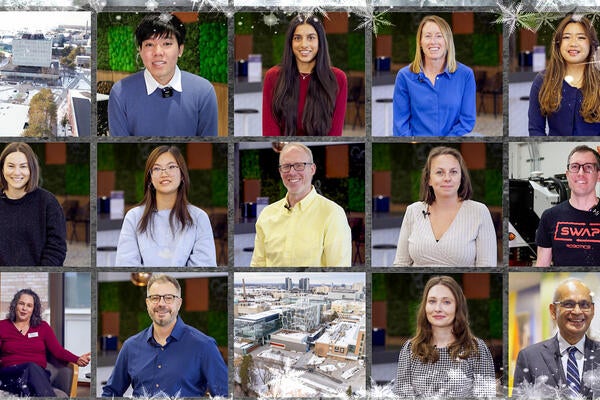
Recognizing women engineers
Mary Wells, dean of Waterloo Engineering, reflects on the Montreal Massacre and the need for women engineers

Mary Wells, dean of Waterloo Engineering, reflects on the Montreal Massacre and the need for women engineers
By Mary Wells Faculty of EngineeringDecember 6, 1989. That day, which cast a shadow on all our campuses, is forever etched in my memory. I was a recent engineering student graduate from McGill University when 14 women were murdered at École Polytechnique de Montréal in an antifeminist mass shooting. Twelve of the women killed were engineering students. All engineers around the world were forever impacted by this day and the loss of their future colleagues and peers.
Before the Montreal Massacre, I never thought of myself as a women engineer – just an engineer. This awareness brought many realities and responsibilities to light for me – namely, that I was immersed in a male-dominated field with a small group of female peers and few female role models. And that I could use my position to encourage other women to enter the engineering profession and help them along their own journeys.
We have made progress in the last 33 years but there is still more to be done. Overall, the enrolment of women in engineering across Canada in the mid-1980s was close to 11 per cent. Today, that number is over 25 per cent. While there is not much written on the subject yet, I do believe the entry – and sustained increase – of women into the engineering profession has changed the trajectory of the field forever and for the better.
Working together
Our planet is now home to 8 billion people and faces catastrophic climate change. As engineers, we have designed and harnessed technology to extract resources, build cities and produce enormous profit but at great cost to future generations.
We need engineers now more than ever before, but we need them to think differently. Instead of asking if we can solve a problem, we also need to ask if we should. We need to approach problem-solving, the mainstay of engineering, by defining problems based on the human and environmental impact rather than the bottom line.
This human-centred approach is best realized by teams of engineers that include a diversity of voices. Research shows that diverse teams deliver better results from design outcomes to operational metrics. Company performance is also measured through its social license which is built on several factors including demonstrated inclusivity.
It pays, in more ways than one, to have women and men engineers at the table and working together.
Supporting human potential
We need more women engineers to provide alternative voices and balance. The gender gap in engineering is not a social justice issue. But it does present us with a valuable opportunity to grow and advance the profession; greater diversity and equity will ultimately improve the field for all engineers.
 Mary Wells, dean of Waterloo Engineering.
Mary Wells, dean of Waterloo Engineering.
In my experience, women engineers bring an important holistic perspective to the work they do. Their technical skills as engineers are often enhanced by their proficiency in ‘human skills’, adding immense value to their workplaces through communication, compassion, empathy and collaboration.
As more women engineers graduate and pursue careers, their voices will grow louder and more confident. My hope is that these diverse voices will, by their very existence, continue to challenge industry and academia to think and do better.
And, as I remember the 14 women who died 33 years ago, it is my job to ensure that all our engineering students, regardless of their identity, feel welcome, safe and supported as they fulfill their educational ambitions and reach their human potential.

Read more
Here are the people and events behind some of this year’s most compelling Waterloo stories

Read more
A winter holiday message from President Vivek Goel

Read more
The Waterloo community comes together to remember, reflect and respond to gender-based violence
The University of Waterloo acknowledges that much of our work takes place on the traditional territory of the Neutral, Anishinaabeg, and Haudenosaunee peoples. Our main campus is situated on the Haldimand Tract, the land granted to the Six Nations that includes six miles on each side of the Grand River. Our active work toward reconciliation takes place across our campuses through research, learning, teaching, and community building, and is co-ordinated within the Office of Indigenous Relations.